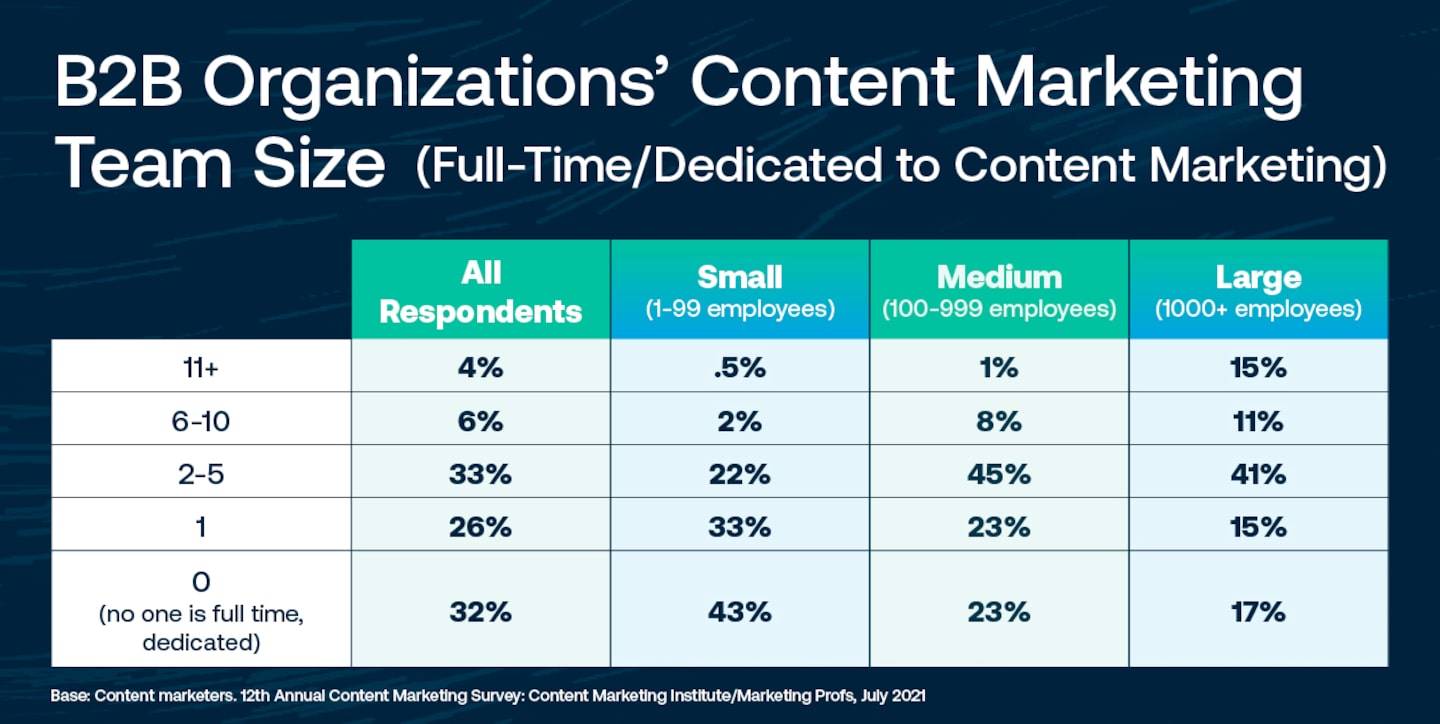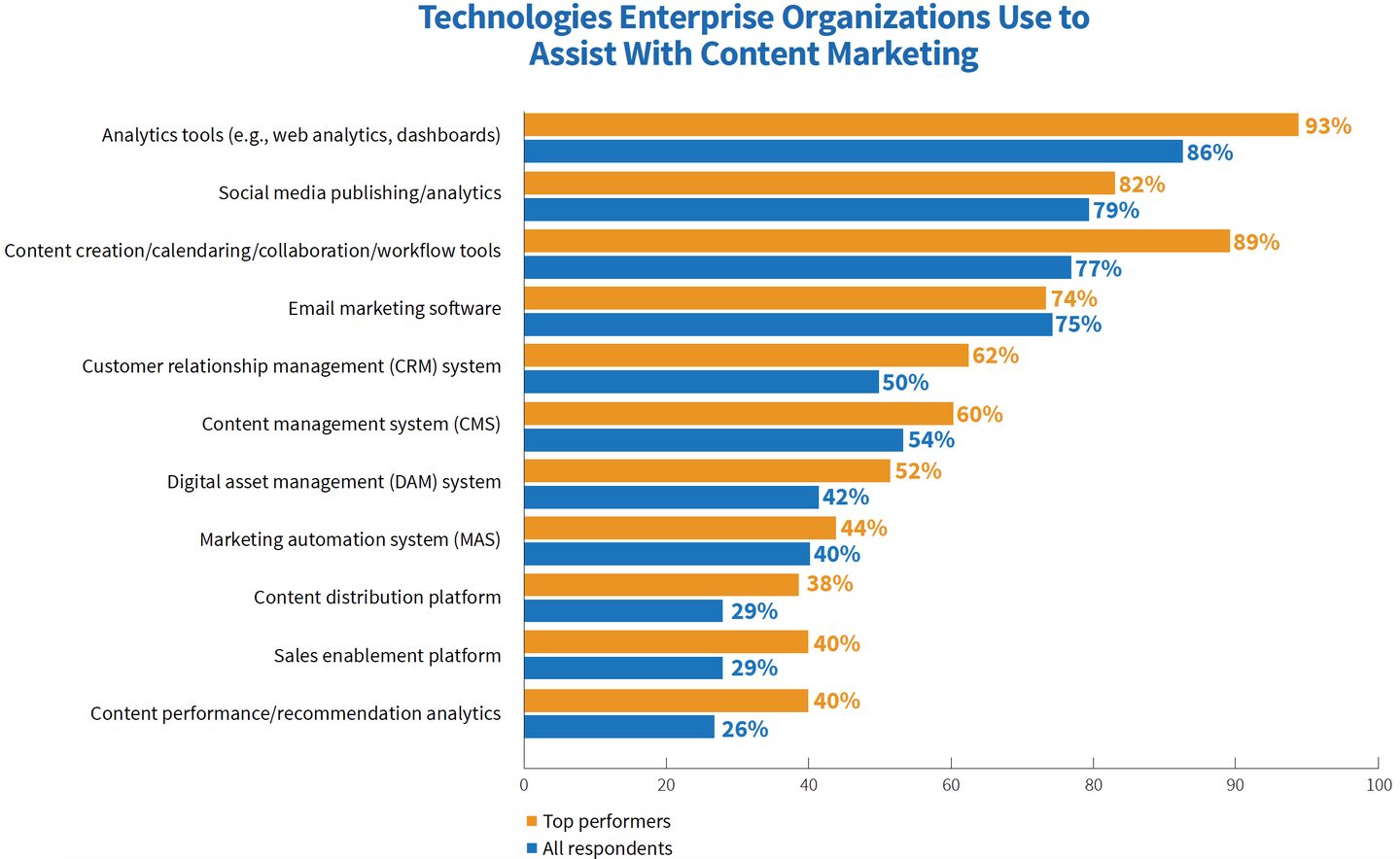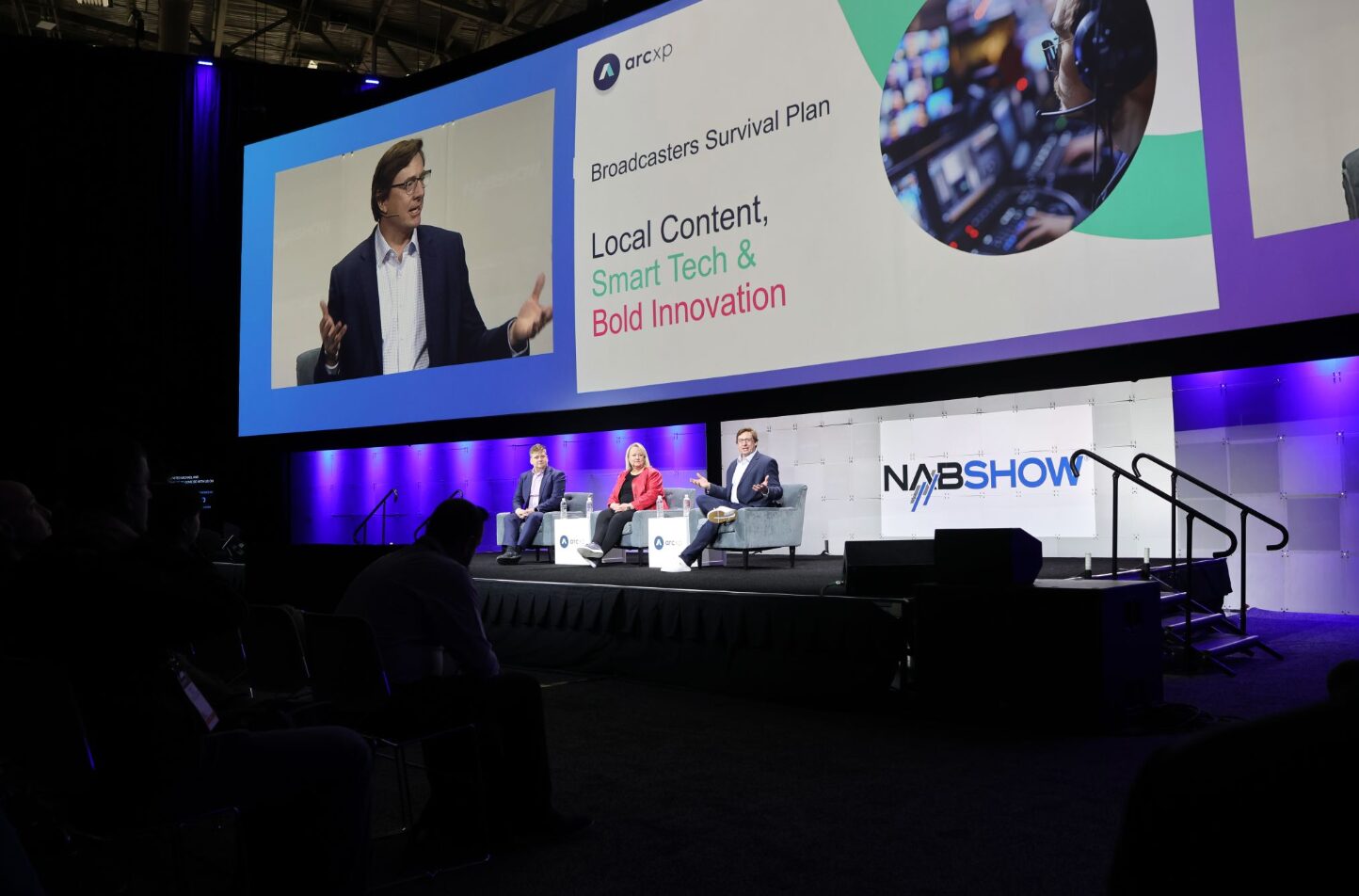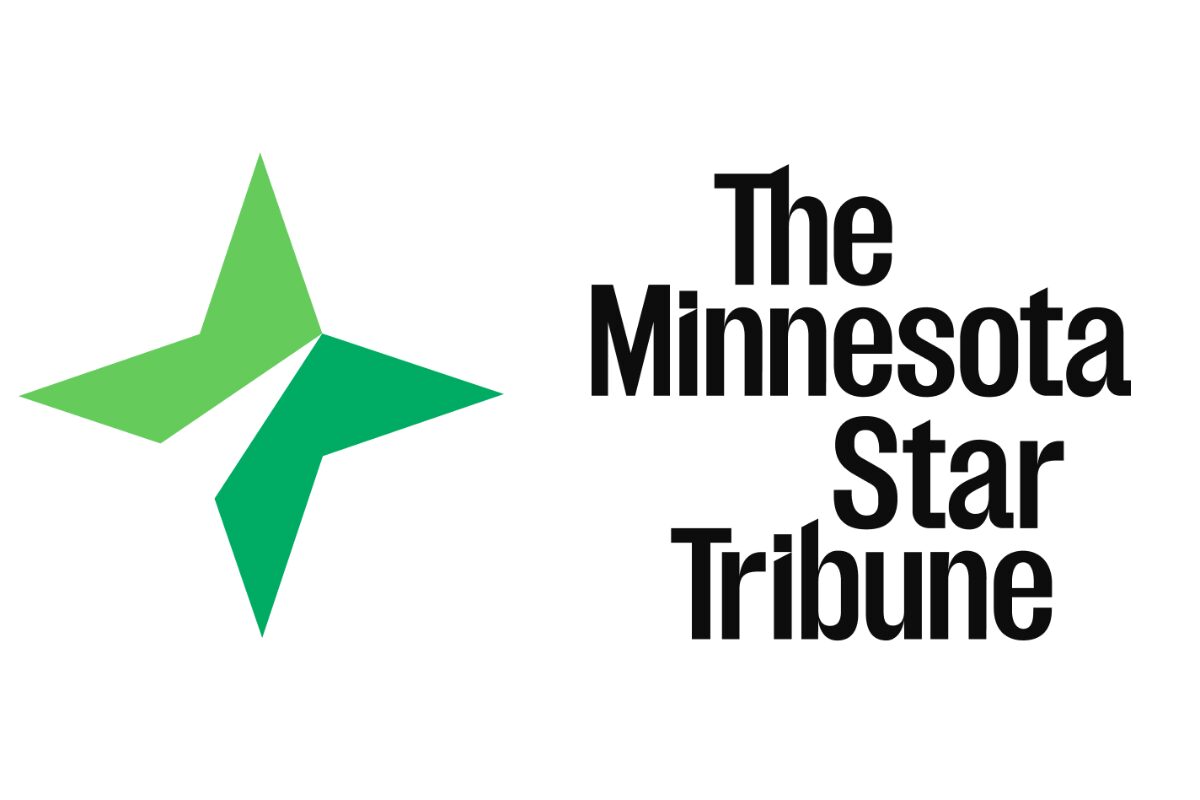5 content marketing tips you need to know
In a competitive marketing landscape, content is key to engaging consumers and building brand awareness. However, implementing effective content is easier said than done (or is it?). Read on to learn how your business can unlock the secrets of successful content creation.

With two-thirds of today’s B2B buyer journey taking place through independent research, content marketing has become a critical component of demand generation.
As attention spans fall and business demands rise, to be successful at content marketing, organizations need to have a well-thought-out strategy, one that is built around a solid content marketing operations plan.
Arc XP’s vice president of marketing, Jeana Garms, joined Content Marketing World’s Community Livestream to talk about the importance of content marketing planning and five tips B2B marketers need to know. Click here to watch the session.
Tip #1. Don’t just jump into creating content.
On average, it takes B2B marketers anywhere from eight to 12 engagements with an individual to generate a qualified lead. That’s not just eight to 12 pieces of content, but eight to 12 pieces that the individual themselves find compelling enough to open, click, read, or watch.
This is where the importance of planning starts. Many B2B companies jump right into creating content without the upfront diligence of detailing their strategy, their development process, and defining what performance looks like. As a result, these organizations encounter three substantial impacts that cause them to backtrack to square one:
- Elongated and inefficient content development timelines, resulting in longer time to value. Depending on your business type and sales cycle, these inefficiencies alone can have a significant impact on your ability to create product demand and move the prospect from awareness through consideration to evaluation.
- Content that misses the mark with your audience. Without a standardized process for measuring performance, you’ll be flying blind on knowing what themes or messages resonate with your audience – and which are falling flat.
- Negative impact to your brand perception. Content that misses the mark not only impacts content performance but can slam the door on product consideration. If your audience deems the content you produce not worthy of their time, the same can be said of their perception that your product can solve their challenges and help them meet their goals.
Do the due diligence. Define your strategy, identify your content objectives, and identify what performance will mean to you. Making the effort upfront will make it significantly easier to attract and engage buyers and get your product in their consideration set.
Tip #2. Build a strategic framework.
The strategic framework is the ‘why’ of your content and provides the direction to align your efforts. It is where your audience and SEO keyword research comes into play.
Here are four questions to ask when building your framework:
- What is your content’s purpose? What unique value will it provide your audience?
- What are the topics that make sense for you, as an organization, to be talking about and have a position on?
- What are the questions your content is going to answer for your audience?
- What are the accompanying keywords you are going to use to help make sure your content gets found?
The framework also identifies the ‘what’ of your content – what media formats you’ll prioritize, your publishing frequency, and on what channels and platforms will your content be distributed. It is here that you will also identify what success looks like for each content type. Use those definitions to back into setting effective goals and objectives which performance will be measured against.
Your strategic framework is what drives efficient content creation and enables you to consistently engage with your audience via the well-thought nurture streams and retargeting that keep them progressing from awareness to consideration and so forth.
Tip #3. Map your content flow.
For organizations who jump right into creating content, the lack of an identified content flow is one of the biggest gaps we’ve seen working with content marketers. The initial idea or set of ideas that span different audiences is identified, but thought hasn’t been given beyond that first piece as to what needs to be next to keep the engagement going.
Use regular planning sessions to identify the logical topic progression for your audience. After you write about A, what is next? What are the follow-up topics or questions your audience may need help answering? What adjacent topics make sense to correlate with a proceeding piece? Mapping your content flow helps to ensure you provide audiences a unified experience.
Topic development can become matrixed very quickly. I like to start with the hub and spoke method for mapping content. With this method, your main topic sits at the center and the spokes are the logical supporting topics. From here, adjacent topics to those spokes are identified.

Tip #4. Align expectations and work from the same playbook.
Content marketing is a long-game and requires cross-functional alignment to be successful.
Start by creating an editorial advisory board. While this may seem like a nice-to-have, this is the team that will help develop the playbook and ensure support across the organization.
To develop themes that truly resonate with your audience and meet their needs, participation from the product team as subject matter experts is a must. These are the people who have the detailed information about what your product does, the customer challenges it solves and the benefits it provides.
The sales organization will also play a key role in your theme ideation. Through their sales calls, they receive feedback and insights that are valuable to the topic ideation process such as what questions are prospects asking, what barriers to purchasing exist, and what trends are surfacing.
As content marketing programs are often at the center of the demand generation powering revenue growth, participation from the top levels of the business is central to success. Include an executive stakeholder on your board who can disseminate performance and business impact to organizational leadership. With this person serving as your champion, it will be helpful for them to see and understand what it takes each day to enact your content strategy when it comes to resourcing.
On a more granular level, content marketing teams within the broader marketing team are typically small. In their latest Content Marketing Survey, Content Marketing Institute found that just 33% of B2B organizations have two to five team members dedicated to content marketing while 58% have just one person or no one dedicated full time.

What this means is that content marketing functions are often rolled into other traditional marketing roles, operations roles, technology and at times, external talent like freelancers. When these responsibility overlaps exist, it’s critical that the organization positions the content marketing responsibilities as equally important in that person’s role and not treated as ‘in addition to their day job.’ Not setting this expectation and carrying through this commitment is where many organizations often fail in their content marketing efforts.
Tip #5. Consider using a content management system.
The technologies used to power your content marketing engine are as equally important as establishing the content operations plan itself. Having the right technologies in place not only ensures that your content marketing program runs as planned but does so efficiently and with cohesion across channels.
In their Quick Start Guide to Operations Planning: Help Your Content Engine Work Smarter, Not Harder, Marketing Institute has identified the top content marketing tools used by B2B organizations:
- Analytics tools
- Creation, calendaring, collaboration, and workflow tools
- Social media publishing tools
- Email marketing software
- A CRM or audience management system
None of these come as any surprise. What is surprising is where content management systems fall on the list at sixth. Only 54% of organizations, and just 60% of top performing organizations are using a content management system (CMS).

An agile CMS, like Arc XP Content, enables lean content marketing teams to scale their efforts by removing unnecessary steps and tools to streamline workflows and shorten development timelines.
In many cases implementing a CMS can eliminate many of the disparate tools teams are using for content creation and distribution thereby reducing:
- The time and resources needed to use and manage these individual tools
- Total cost of ownership by eliminating redundant capabilities
- Inconsistency in tone, messaging and aesthetics that comes with using siloed tools.
Using APIs, teams can connect their distribution channels – including their email partner, social platforms, website, mobile app, OTT platforms, etc. – to the CMS and simultaneously publish directly to each channel. No more going into each individual tool to schedule and publish.
Routine tasks and approval flows are another big challenge when it comes to elongating content creation. Using built-in workflow automations such as Arc XP’s WebSked both shortens the editing and approval process across both internal and external teams and enables teams to create one source of truth so that the hassle of individual Word docs sent back and forth are no longer a challenge.
When it comes to what B2B marketers need to know about content marketing, this is just the tip of the iceberg. As customers continue to take ownership of their buyer journey, content marketing will be central to demand generation success.
Want to learn more about how to make your content operations engine work smarter not harder? Download The Quick Start Guide to Operations Planning from Content Marketing Institute and Arc XP.
Recent resources




